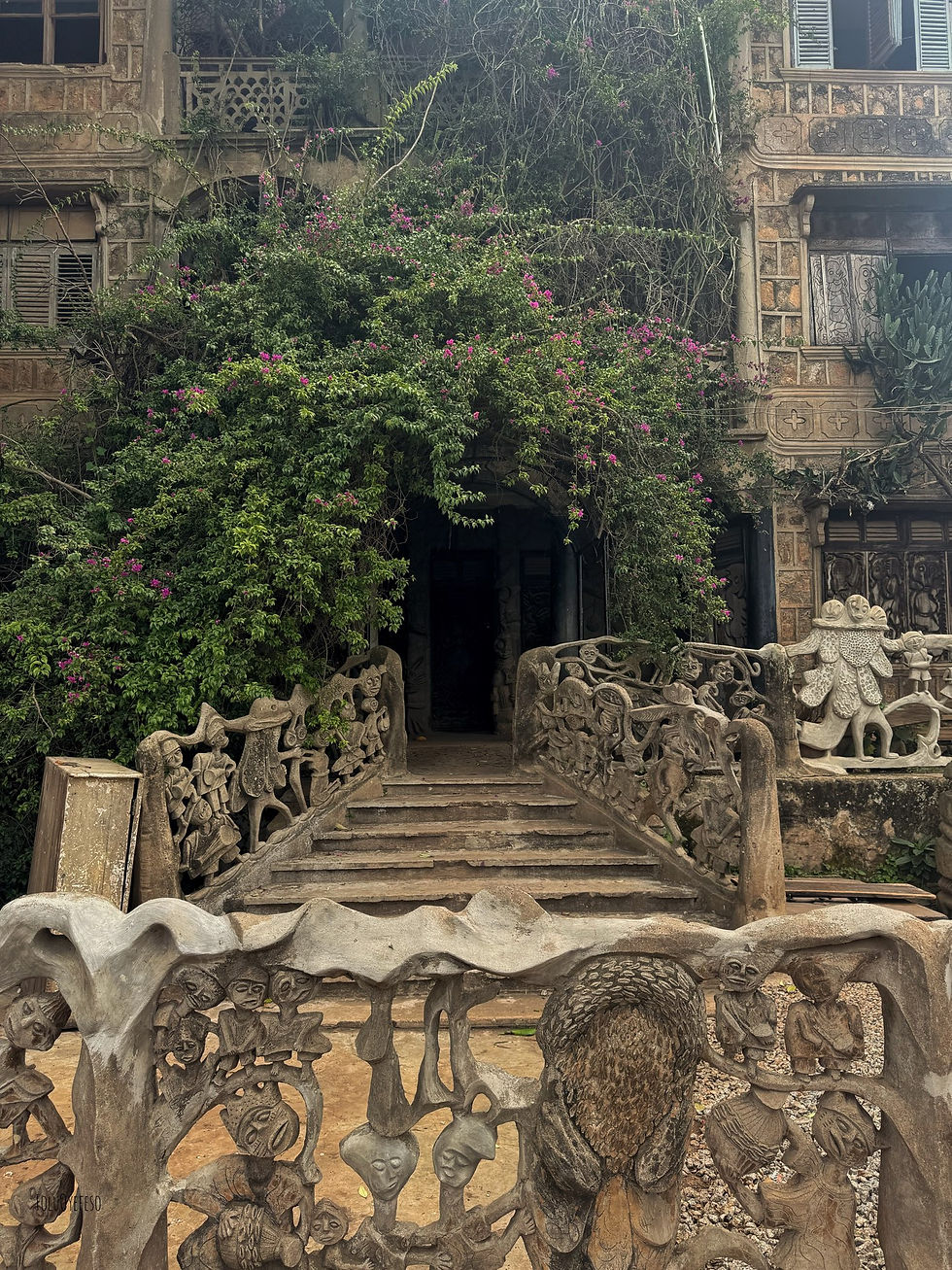Susanne Wenger: A Lesson in Cultural Exchange and Yoruba Art Symbiosis
- foluoyefeso
- Aug 26
- 3 min read
The concept of cultural exchange is of significant importance to me. How do we travel, interact and learn from the new people we meet? Do we give as much as we receive - and are these encounters truly co-beneficial?
The contributions to the pantheon of Yoruba art and spirituality by Austrian borne artist - Susanne Wenger (4 July 1915 - 12 January 2009) cannot be understated. It is an example of collaboration and cultural exchange that should be studied for the purpose of emulation, adaptation and scaling.

Wenger arrived in Ibadan, Nigeria, around 1950 with her newly married husband Ulli Beier who had taken up a position as a phonetics lecturer at the University of Ibadan. Soon after, they moved to Ede where Wenger fell ill with tuberculosis. Her recovery became a spiritual turning point, leading her to an Obatala priest (Ajagemo) who initiated her into Yoruba cosmology. Around this point, Wenger and Beier separated, no doubt a difficult but defining crossroads in her life.

Eventually Wenger settled and worked in Osogbo, dedicating years and skills to the sacred grove to revitalize its artistic face. In collaboration with local artists, she founded the New Sacred Art School, and eventually married a drummer named Chief Alarape. She blended her artistic training with Yoruba lore, Ifa philosophy and indigenous building techniques to produce monumental works that narrated the stories of the Yoruba Orisha. Her work spread far and wide, earning her the title of the Adunni Olorisha. Her contributions earned the sacred grove a spot on the UNESCO World Heritage list in 2005.
I find it interesting because of the multiple purposes her works serve, they were not just ornaments. They functioned as walls, barricades, furniture and boundaries in terms of their physical properties, but they also served as embodiments of the spiritual forces which protect and bless the land.

Her house in Osogbo - featuring a Brazilian and Nigerian architectural fusion, is an artistic masterpiece, with pillars and posts alive with carvings of faces, symbols and energetic scenes. We didn’t have the opportunity to see the interior or the backyard, the building was locked. I however heard that there are plans to turn it into a museum, so if that’s true, I eagerly anticipate that.

Wenger died at the age of 93 in Osogbo, and she is buried at the Sacred Grove. I thought it was important to highlight the late Susan Wenger's life because her style of collaboration was not one of extraction for personal gain, but a mutually beneficial exchange of ideas, lore and respect. This hasn't always been the case in African history when foreigners visit, so the few times they occur, they should be noted and celebrated. In Wenger's story, we find a reminder that cultural exchange thrives not when it extracts, but when it listens, contributes and protects.




Comments